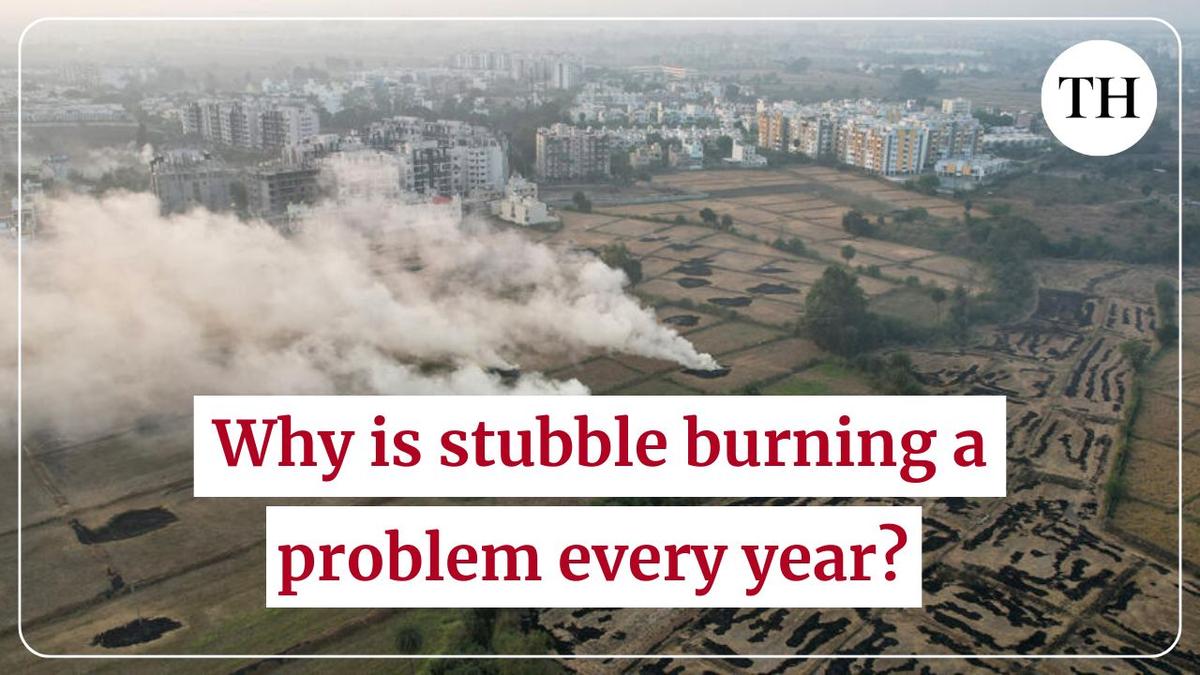
Watch: Why is stubble burning a problem every year?
The Hindu
Annual winter smog in Delhi NCR due to stubble burning, gunpowder residue, and pollution; AQI peaks at 494.
Every winter, a thick shroud of smoke spreads across the skies of Punjab and Haryana, eventually engulfing Delhi NCR. This annual phenomenon occurs when the cold, still air traps a toxic mix of pollutants—smoke from stubble burning, post-Deepavali gunpowder residue, and emissions from vehicles and industries.
Despite a reported decline in stubble-burning incidents over recent years, the air quality in Delhi remains alarmingly poor. On one particularly bad day, the city’s Air Quality Index (AQI) peaked at 494, just a few points shy of the maximum observable limit of 500 set by the Central Pollution Control Board (CPCB). For context, AQI levels up to 50 are considered safe, while anything above 300 falls into the ‘inferior’ category.
Why do farmers in the north continue to follow the practice of stubble burning? What are the challenges they face? What are the alternatives?
Credits
Reporting: Nikhil M. Babu
Voiceover and editing: Sabika Syed

The Karnataka government has drafted a comprehensive master plan for the integrated development of Kukke Subrahmanya temple, the State’s highest revenue-generating temple managed by the Hindu Religious Institutions and Charitable Endowments Department. The redevelopment initiative is estimated to cost around ₹254 crore and aims to enhance infrastructure and facilities for devotees.












